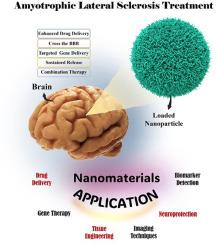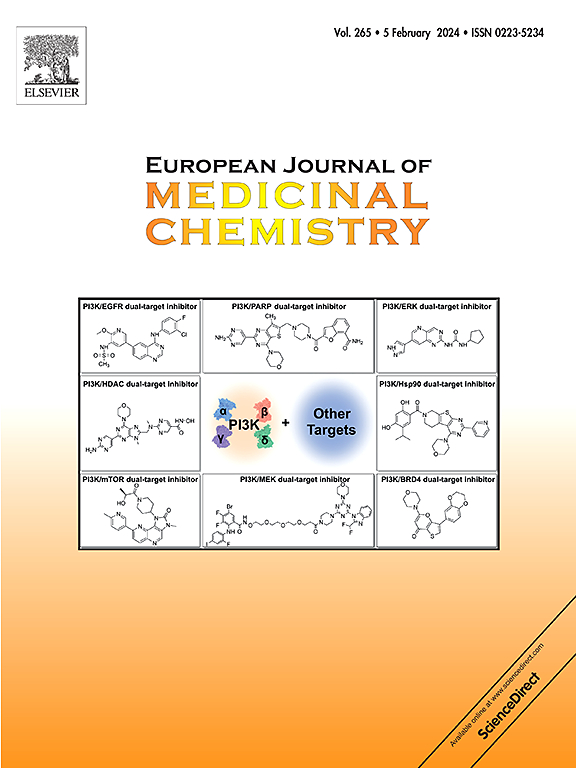通过纳米技术这一尚未开发的前沿领域,肌萎缩侧索硬化症的治疗有望取得突破性进展
IF 6
2区 医学
Q1 CHEMISTRY, MEDICINAL
引用次数: 0
摘要
肌萎缩性脊髓侧索硬化症(ALS)是一种以运动神经元变性、肌肉无力和最终瘫痪为特征的进行性神经退行性疾病,本文探讨了纳米技术在肌萎缩性脊髓侧索硬化症(ALS)的治疗和诊断中的变革潜力。纳米技术可在多个领域提供创新解决方案,包括靶向给药、神经保护、基因治疗和编辑、生物标记检测、先进成像技术和组织工程。通过提高治疗干预的精确性和有效性,纳米技术促进了一些关键的进步,如穿越血脑屏障、靶向特定细胞类型、实现持续治疗释放,以及针对 ALS 复杂的病理生理学实现组合疗法。尽管前景广阔,但这些方法的临床转化仍面临挑战,包括潜在的细胞毒性、生物相容性和监管合规性,这些都必须通过严格的研究和测试来解决。这篇综述强调了纳米技术在 ALS 靶向给药和基因治疗/编辑中的应用,并借鉴了作者之前在各种纳米技术平台上的研究成果,说明了克服药物和基因给药中类似障碍的策略。通过缩小前沿技术与临床应用之间的差距,本文旨在强调纳米技术在塑造 ALS 治疗未来方面的重要作用。本文章由计算机程序翻译,如有差异,请以英文原文为准。

Promising Breakthroughs in Amyotrophic Lateral Sclerosis Treatment through Nanotechnology's Unexplored Frontier
This article explores the transformative potential of nanotechnology in the treatment and diagnosis of amyotrophic lateral sclerosis (ALS), a progressive neurodegenerative disorder characterized by motor neuron degeneration, muscle weakness, and eventual paralysis. Nanotechnology offers innovative solutions across various domains, including targeted drug delivery, neuroprotection, gene therapy and editing, biomarker detection, advanced imaging techniques, and tissue engineering. By enhancing the precision and efficacy of therapeutic interventions, nanotechnology facilitates key advancements such as crossing the blood-brain barrier, targeting specific cell types, achieving sustained therapeutic release, and enabling combination therapies tailored to the complex pathophysiology of ALS. Despite its immense promise, the clinical translation of these approaches faces challenges, including potential cytotoxicity, biocompatibility, and regulatory compliance, which must be addressed through rigorous research and testing. This review emphasizes the application of nanotechnology in targeted drug delivery and gene therapy/editing for ALS, drawing on the author’s prior work with various nanotechnological platforms to illustrate strategies for overcoming similar obstacles in drug and gene delivery. By bridging the gap between cutting-edge technology and clinical application, this article aims to highlight the vital role of nanotechnology in shaping the future of ALS treatment.
求助全文
通过发布文献求助,成功后即可免费获取论文全文。
去求助
来源期刊
CiteScore
11.70
自引率
9.00%
发文量
863
审稿时长
29 days
期刊介绍:
The European Journal of Medicinal Chemistry is a global journal that publishes studies on all aspects of medicinal chemistry. It provides a medium for publication of original papers and also welcomes critical review papers.
A typical paper would report on the organic synthesis, characterization and pharmacological evaluation of compounds. Other topics of interest are drug design, QSAR, molecular modeling, drug-receptor interactions, molecular aspects of drug metabolism, prodrug synthesis and drug targeting. The journal expects manuscripts to present the rational for a study, provide insight into the design of compounds or understanding of mechanism, or clarify the targets.

 求助内容:
求助内容: 应助结果提醒方式:
应助结果提醒方式:


